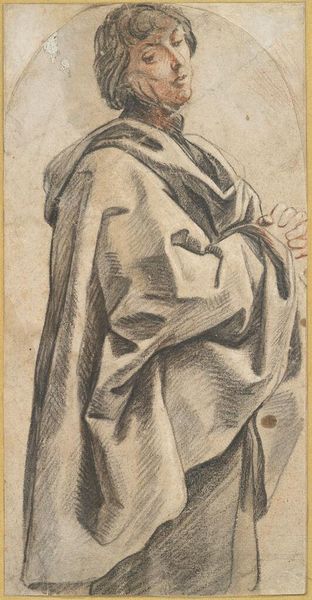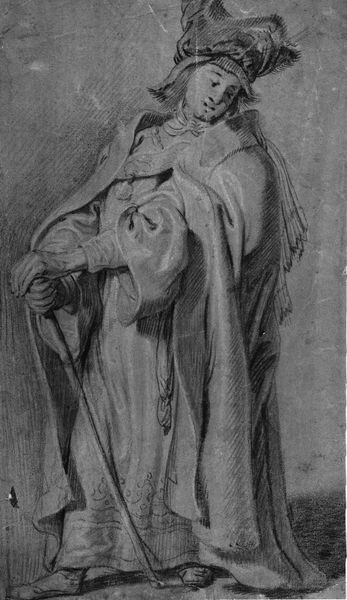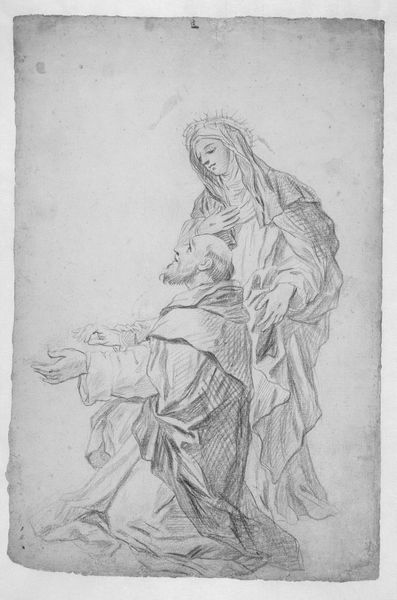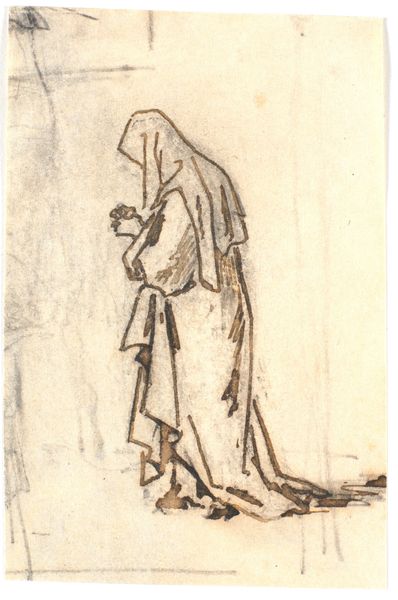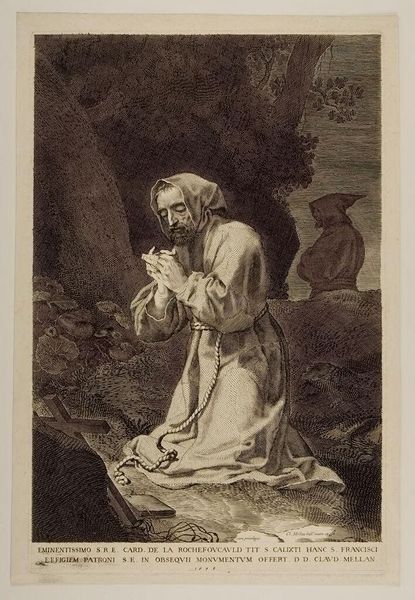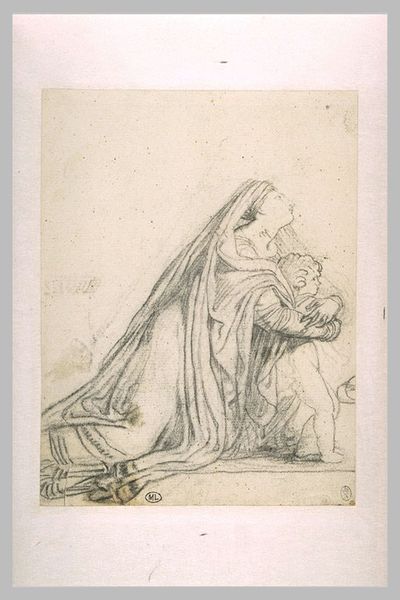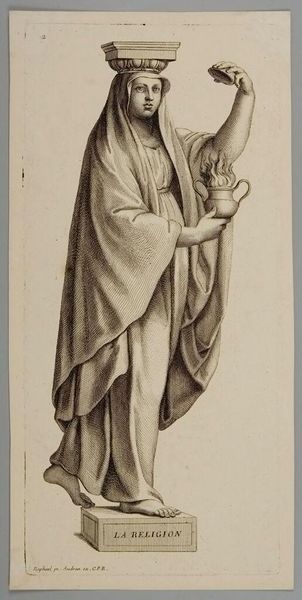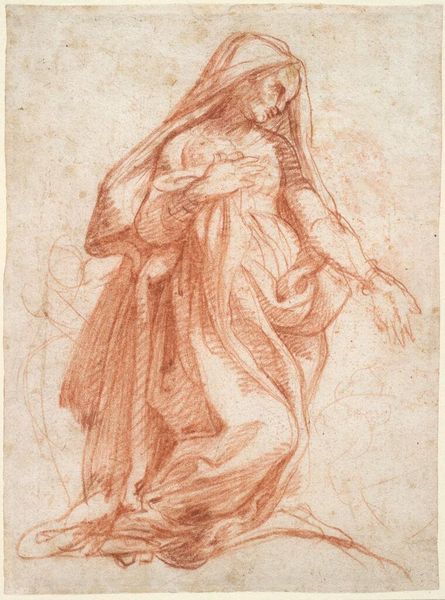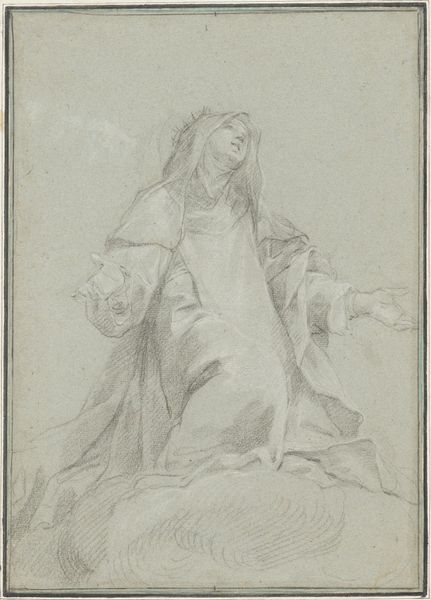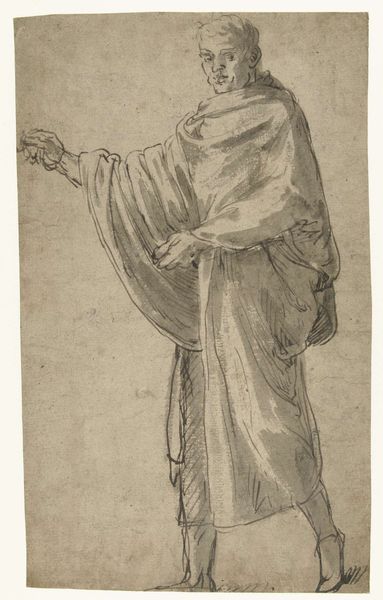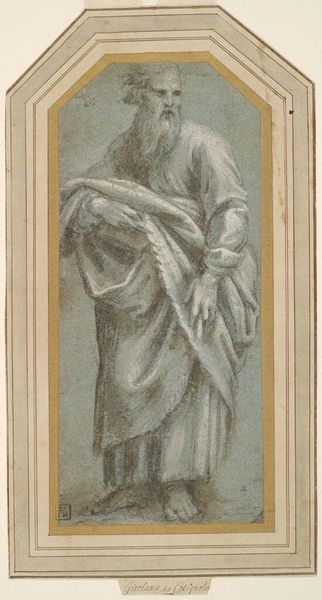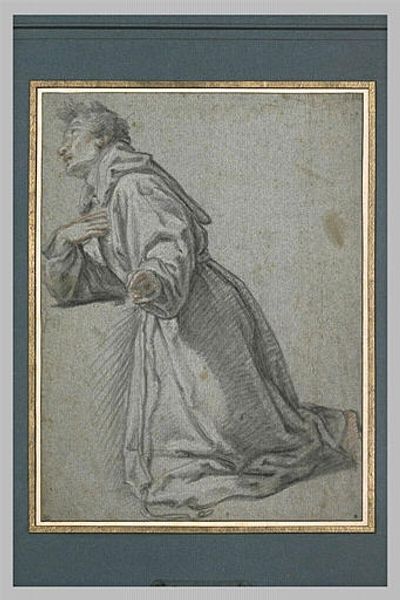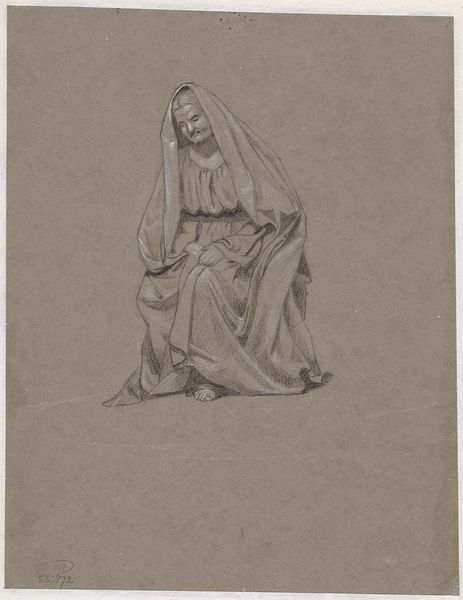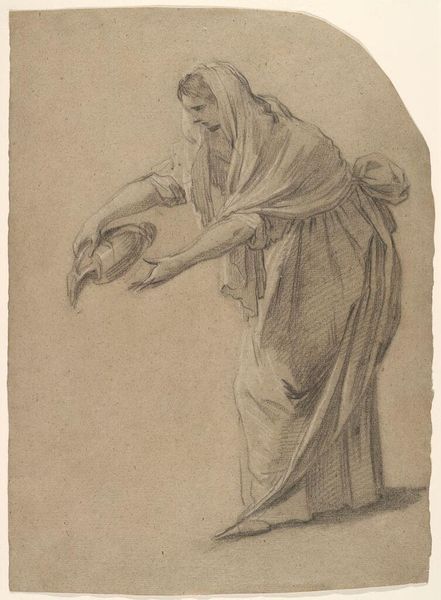
drawing, print, paper, ink, chalk, pen, charcoal
#
portrait
#
pencil drawn
#
drawing
# print
#
charcoal drawing
#
figuration
#
paper
#
ink
#
pencil drawing
#
chalk
#
pen
#
charcoal
#
academic-art
Dimensions: 154 × 120 mm
Copyright: Public Domain
Curator: Oh, this piece is whispering secrets to me already. I feel it in my bones—look at this Sante Peranda drawing, "Kneeling Woman," from an unknown date. What's your take, straight off? Editor: Stark. The palette feels muted, almost sepia-toned, immediately suggesting a historical narrative weighed down by the somberness of the kneeling figure. It makes me wonder about power structures. Curator: Right? The way her figure seems to emerge from this tinted paper... it's as if a memory is solidifying before your eyes. Peranda used pen, ink, charcoal, chalk… every shade pulling at your heartstrings. I sense such an intimacy with grief or… maybe pious meditation? Editor: Or forced submission? Consider the pose – kneeling is rarely a position of strength, particularly within a patriarchal framework. What were the societal pressures acting upon women at the time, demanding this kind of visible humility? Curator: It’s true… Her folded hands – they almost vanish in the drapery... The triangular cut of the paper itself feels deliberately composed. Like, he wanted her contained within these lines, visually? Do you see any traces of feminine empowerment peeking through though? I wonder about hidden strengths or quiet forms of rebellion maybe implied by her downward gaze? Editor: It’s possible. Perhaps her averted eyes represent a refusal to engage with the power that constrains her. Yet, I am cautious about imbuing historical subjects with contemporary agency that might not resonate with the lived realities of women within her era. Instead, the artist creates a mirror for modern audiences, compelling them to reckon with systems of control still mirrored today. Curator: Agreed. There's this quiet strength though too. Even cloaked as she is in what could easily become dejection. It's almost like the act of drawing becomes a prayer itself. You feel it there, in the smudged charcoal strokes and the flowing gowns he captured! What’s the value of seeing artwork like this in a gallery? Editor: It forces an encounter. When we exhibit art depicting historical oppression, it becomes an obligation to examine how gendered, raced and classed modes of subjugation have persisted, mutated, or been actively challenged. It becomes a bridge for intergenerational dialogue. Curator: Mmhmm, so powerful… Thanks. This work just… sings with questions doesn't it? So many layers still left to unfold... Editor: Absolutely. The “Kneeling Woman” is less an answer and more a commencement.
Comments
No comments
Be the first to comment and join the conversation on the ultimate creative platform.
